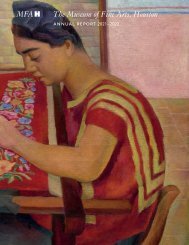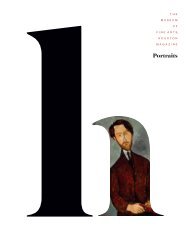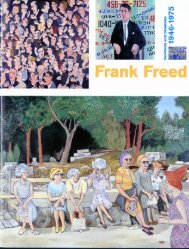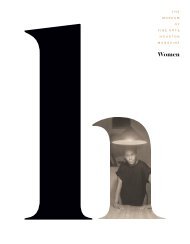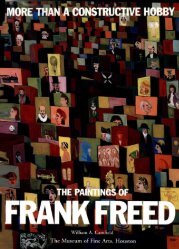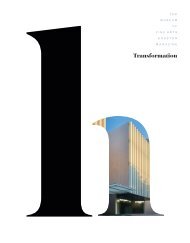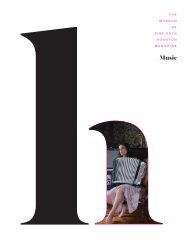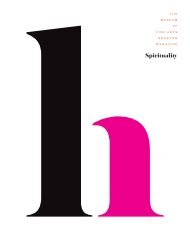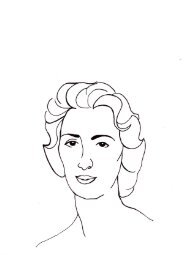You also want an ePaper? Increase the reach of your titles
YUMPU automatically turns print PDFs into web optimized ePapers that Google loves.
<strong>The</strong> works shown here are among those featured in Gordon Parks: Stokely Carmichael and Black Power,<br />
on view October 16, <strong>2022</strong>, through January 16, 2023, in the Millennium Gallery of the Audrey Jones Beck Building.<br />
and fear. With no ready images of this foreign ideology, media<br />
outlets quickly latched onto photos of Carmichael to represent<br />
Black Power, casting him as a figure of racial violence and<br />
distorting his character and SNCC’s message. Yet, looking<br />
back on this period, Carmichael’s autobiography lists one<br />
published work that was a fair and “sensitive portrait”—<br />
the photographer Gordon Parks’s “Whip of Black Power,” a text<br />
and photo-essay published in Life magazine on May 19, 1967.<br />
Gordon Parks (1912–2006) was one of the 20th century’s<br />
preeminent photographers. He created groundbreaking work<br />
for the Farm Security Administration and magazines such as<br />
Vogue and Life, where he was the first Black staff photographer.<br />
Beyond his work in photography, Parks was a respected film<br />
director, composer, memoirist, novelist, and poet who left<br />
behind an exceptional body of work. In this photo-essay, Parks<br />
details his firsthand experience traveling with Carmichael off<br />
and on from fall 1966 to spring 1967, capturing the activist in<br />
meetings, at lectures, and giving speeches, as well as at more<br />
personal life events, such as his sister’s wedding. <strong>The</strong> artist’s<br />
smart and eye-catching images relay his perspective by drawing<br />
on visual tropes and harnessing connotation, presenting<br />
Carmichael as a changeable and complex figure, his character<br />
drawn as one of nuance and multidimensionality. Taken as a<br />
whole, “Whip of Black Power” represents Parks’s visual translation<br />
of Black Power and its root of self-love.<br />
<strong>The</strong> tide of mass-media imagery was irrevocably turning<br />
by the time Carmichael was elected chairman of the SNCC in<br />
May 1966. Images of passive protests were replaced by Black<br />
participants engaged in an active resistance against oppression.<br />
This change shattered the familiar dynamic. “With the<br />
change of lead visuals came a change of national sentiment.<br />
And with the pronouncement of black power, general sympathy<br />
gave way to a barrage of baffled questions belying white<br />
fear,” author Leigh Raiford summarized. Indeed, the reports<br />
and images that emerged following Carmichael’s speech at<br />
the March Against Fear painted a distinctly ominous message.<br />
In one such photo taken by Bob Fitch, Carmichael appears<br />
as a haunting figure, unnaturally lit against the dark night and<br />
gesturing aggressively at the crowd (see opposite page).<br />
<strong>The</strong> image caption is equally telling, emphasizing anger and<br />
danger: “At a night rally in Broad Street Park, a furious Stokely<br />
Carmichael delivers his famous ‘Black Power’ speech.”<br />
As a denigrated sign of Black radicalism, Carmichael’s<br />
portrait became a one-dimensional, myopic symbol of racialized<br />
fear. Parks’s writing and photographs, however, stand in<br />
direct opposition to that prejudiced point of view. Drawing on<br />
photographic compositions or broad visual motifs familiar<br />
to Life’s readers, Parks forced a recognition of Carmichael’s<br />
full humanity within the pages of the magazine. In doing so, he<br />
created a new, positive image of Carmichael’s character and<br />
Black Power.<br />
Parks’s first image commands the page (see above). It<br />
shows Carmichael speaking into a microphone, his right hand<br />
slashing the air, his left curled into a fist. His conservative suit<br />
is fitted, though he has loosened his tie and unbuttoned the<br />
top button of his white dress shirt. He appears both serious<br />
and charismatic, articulate and agile. <strong>The</strong> crowd Carmichael<br />
addresses in Watts, California, is barely visible; instead, the<br />
cropped image focuses the eye on this mesmerizing and<br />
monumental man. Parks’s text emphasizes the energy of the<br />
moment, describing the amped-up crowd, bodyguards, and<br />
Carmichael, the magnetic force at the center of it all. “This<br />
crowd was made for Stokely Carmichael,” Parks wrote. <strong>The</strong><br />
39<br />
20 × 24”




